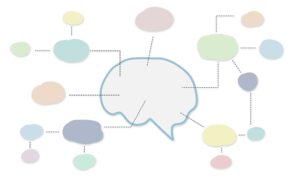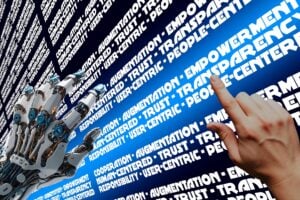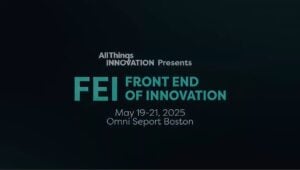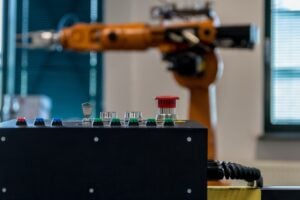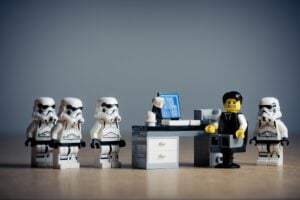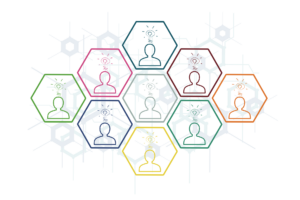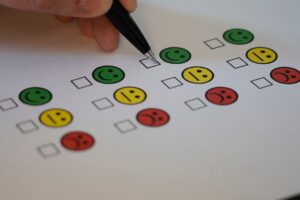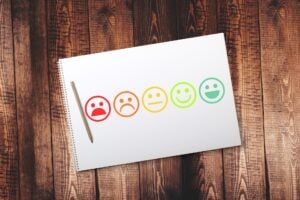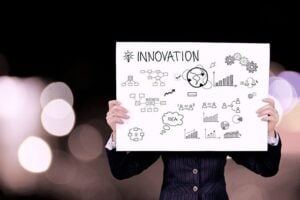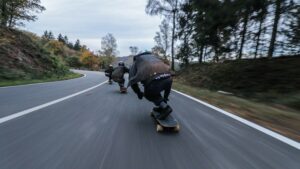Strengthening the Rogue Mindset
In this time of uncertainty, whether you view it through a lens of the economy, politics or society at large, it’s still important to bring ideas to the table. Ideas are a choice, as Jamaar Smiley put it in his opening remarks to kick off the show. “Humanity is in motion and together we thrive. Embrace the spark,” says Smiley.
Certainly, a core focus of the innovation focused show was seen in the format, with day one highlighting human intelligence; day two exploring AI; and day three a look at the future. Throughout, there was a presence of the overall theme of collective intelligence—that together, minds with machines, can sow the seeds and harvest innovation, while sparking transformation.
Perhaps it was fitting that the first keynote panel of FEI25 highlighted “Actioning the Rogue Mindset,” which FEI and All Things Innovation developed as a special research report online along with a roundtable component at the show directly after the panel.
The keynote session included Tammy Butterworth, Product Innovation Director at Welch’s; Liza Sanchez, Vice President, Research & Development at Procter & Gamble; Scott Ehrlich, Chief Innovation Officer, Head of Corporate Strategy at Sinclair Broadcast Group; Brigette Wolf, CMO at MyMochi; and Craig Dubitsky, founder and CEO at Happy.
Bringing all of these panelists’ different job roles together, while exploring the rogue mindset, also helped put it all in perspective with an emphasis on collaboration. Conceived of by Butterworth at the 2024 Front End of Innovation, the rogue mindset is a way to champion an unconventional approach to decision-making and innovation. It emphasizes resilience, openness to unconventional ideas, grit, unwavering curiosity, empowerment and communication. The audience was encouraged to think outside the box yet fuel alignment with business strategy.
In some ways, the rogue mindset is an enhanced version of the innovation growth mindset that today’s innovators strive for in a corporate environment, while breaking down silos, removing roadblocks and connecting the dots.
For Butterworth, going rogue is a way as a leader to inspire teams, and make your innovations have an impact on the world and the organization. For Ehrlich, it’s about collaboration and enhancing your problem-solving capabilities. Dubitsky, meanwhile, pointed to how the diversity of thought in a team and a love of learning can help energize innovation.
Sanchez made a relevant point that the rogue mindset is not only about bringing more outside the box thinking inside the box—it’s also about making the overall box bigger for the innovation practitioner. “Bring skills and capabilities into it from the outside,” says Sanchez, which is one avenue to creating a safe environment and putting a diversity of voices into the mix.
Making sure the team has a safe environment was mentioned by several panelists, as is focusing on the customer. “This is about bringing ideas, and permission to get out of the box,” says Wolf.
Ultimately, as our panelists highlighted some advice for the audience from their unique perspectives, it was determined that even with a rogue mindset, it’s about making it easier to get to decision making. From stamping out biases to taking a leap of faith, to lessons learned, it’s about reducing the fear of not trying.
“Have the courage of conviction,” says Dubitsky.
AI Amplifies Impact on Innovation
If day one of FEI25 was all about the individual innovator and/or how a rogue mindset can enhance decision-making, day two was all about how to leverage AI in that decision-making process while remaining empathetic, differentiated, and keeping ourselves grounded in humanity.
The keynote, “No-Hype AI Impact on Organizational Efficiency, Value, Teams & The Bottom-Line,” featured Rick Robinson, VP, AgeTech Collaborative, VP Product Innovation at AARP; Shahid Azim, CEO, Managing Partner, Co-Founder at C10 Labs; Sanji Fernando, Operating Partner, Data & Artificial Intelligence at Frazier Healthcare Partners; and Anushka Nair, Rhodes Scholar, Researcher at MIT.
Our panelists agreed that AI has improved operations in a significant way, cutting out bureaucracy, enhancing personalization, saving operational costs and reducing fraud.
As Nair noted, we are now in a new era, a time of bringing research, AI and theory together into practice. Potential technology is moving fast and creating faster outcomes.
Yet, as AARP’s Robinson observed, we still have human creativity, decision-making and problem solving in the mix. Still, we are perhaps identifying and retaining the best capabilities of both humans and machines at this juncture moving forward, says Fernando.
The current rate of change related to AI is bringing new thinking to the often-closed loop of innovation. Humans need to be in on the rate of change. “Get your hands dirty and provide value for your team and organization. You are in control,” advises Nair.
While this panel was focused on downplaying the hype regarding AI, there is no question that companies are undergoing an “arms race” of sorts as they bolster their operations with AI systems, provide customers with new user experiences and enhance new ways of thinking for innovators.
“There is a core tension between humans and applications of AI,” says Fernando. But it is in this evolving, optimization environment that can unlock growth and productivity.
Whether you leverage AI as a thinking partner, or enhance your human side’s rogue mindset approach, it’s all about producing better decision-making in the innovation process. Azim coined the phrase that humans can use AI as a “cognitive amplifier.” In this way, brush off the hype and leverage AI to its fullest potential. Take advantage of this moment as an opportunity to spark innovation in a new era.
Contributor
-

Matthew Kramer is the Digital Editor for All Things Insights & All Things Innovation. He has over 20 years of experience working in publishing and media companies, on a variety of business-to-business publications, websites and trade shows.
View all posts










